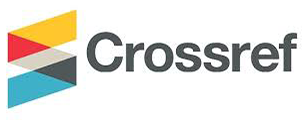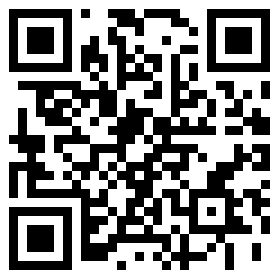- » Focus and Scope
- » Section Policies
- » Peer Review Process
- » Publication Frequency
- » Open Access Policy
- » Archiving
- » Publication Ethics
- » Plagiarism Screening
- » Retraction
Focus and Scope
JRKPF focuses on the publication of the results of studies and scientific research, especially in the field of Physics Education. Even though, there are possibilities for results of non-educational research to be published as long as it can be applied in physics learning.
JRKPF publishes scholarly articles in physics education scope covering:
- ICT in Physics Education
- Physics learning: models and methods of learning
- Development of physics teaching materials
- Physics experiment (which is applicable in physics learning)
- Assessment and Evaluation in Physics
- Conception and Misconceptions in Physics
Section Policies
Frontmatter
Articles
Peer Review Process
All submitted manuscripts will be selected, read, and reviewed in a blind peer review by two reviewers who master their fields. Manuscript selection depends on the content validity, originality, clarity of description, and conformity to the journal's goals.
The manuscript can be accepted without revision, accepted with minor revision, accepted with major revision, or rejected. Reviews result will be emailed to the author and given 3 weeks to send the revised manuscript.
In order to prevent plagiarism, all submitted manuscripts will be checked through anti-plagiarism software.
There are no article processing and submission charges. Published manuscript inside JRKPF will follow Creative Commons: Attribution-NonCommercial 4.0 International License.
Publication Frequency
JRKPF is periodically published twice a year, on April and October each year.
Each published journal contains 8 manuscripts and in total 16 manuscripts each year.
Open Access Policy
This journal provides immediate open access to its content on the principle that making research freely available to the public supports a greater global exchange of knowledge.
Archiving
This journal utilizes the LOCKSS system to create a distributed archiving system among participating libraries and permits those libraries to create permanent archives of the journal for purposes of preservation and restoration. More...
Publication Ethics
This statement clarifies the ethical behavior of all parties involved in the act of publishing an article in our journals, including the authors, the editors, the peer-reviewers, and the publisher, namely Universitas Ahmad Dahlan. In general, the publication ethics of the Jurnal Penelitian Fisika dan Aplikasinya (JPFA) refers to the Committee on Publication Ethics (COPE) about Best Practice Guidelines for Journal Editor.
Section A: Publication and authorship
- All submitted papers are subject to a strict peer-review process by at least two reviewers that are experts in the area of the particular paper.
- The review process is a double-blind peer review.
- The factors that are taken into account in the review are relevance, soundness, significance, originality, readability, and language.
- The possible decisions include acceptance, acceptance with revisions, or rejection.
- If authors are encouraged to revise and resubmit a submission, there is no guarantee that the revised submission will be accepted.
- Rejected articles will not be re-reviewed.
- The paper acceptance is constrained by such legal requirements as shall then be in force regarding libel, copyright infringement, and plagiarism.
- No research can be included in more than one publication.
Section B: Authors’ responsibilities
- Authors must certify that their manuscripts are their original work.
- Authors must certify that the manuscript has not previously been published elsewhere.
- Authors must certify that the manuscript is not currently being considered for publication elsewhere.
- Authors must participate in the peer-review process.
- Authors are obliged to provide retractions or corrections of mistakes.
- All Authors mentioned in the paper must have significantly contributed to the research.
- Authors must state that all data in the paper are real and authentic.
- Authors must notify the Editors of any conflicts of interest.
- Authors must identify all sources used in the creation of their manuscripts.
- Authors must report any errors they discover in their published papers to the Editors.
Section C: Reviewers’ responsibilities
- Reviewers should keep all information regarding papers confidential and treat them as privileged information.
- Reviews should be conducted objectively, with no personal criticism of the author.
- Reviewers should express their views clearly with supporting arguments
- Reviewers should identify relevant published work that has not been cited by the authors.
- Reviewers should also call to the Editor in Chief’s attention any substantial similarity or overlap between the manuscript under consideration and any other published paper of which they have personal knowledge.
- Reviewers should not review manuscripts in which they have conflicts of interest resulting from competitive, collaborative, or other relationships or connections with any of the authors, companies, or institutions connected to the papers.
Section D: Editors’ responsibilities
- Editors have complete responsibility and authority to reject/accept an article.
- Editors are responsible for the contents and overall quality of the publication.
- Editors should always consider the needs of the authors and the readers when attempting to improve the publication.
- Editors should guarantee the quality of the papers and the integrity of the academic record.
- Editors should publish errata pages or make corrections when needed.
- Editors should have a clear picture of a research’s funding sources.
- Editors should base their decisions solely on the papers’ importance, originality, clarity, and relevance to the publication’s scope.
- Editors should not reverse their decisions nor overturn the ones of previous editors without serious reason.
- Editors should preserve the anonymity of reviewers.
- Editors should ensure that all research material they publish conforms to internationally accepted ethical guidelines.
- Editors should only accept a paper when reasonably certain.
- Editors should act if they suspect misconduct, whether a paper is published or unpublished, and make all reasonable attempts to persist in obtaining a resolution to the problem.
- Editors should not reject papers based on suspicions, they should have proof of misconduct.
- Editors should not allow any conflicts of interest between staff, authors, reviewers, and board members.
Plagiarism Screening
Papers submitted to the Jurnal Riset dan Kajian Pendidikan Fisika will be screened for plagiarism using CrossCheck/iThenticate plagiarism detection tools. Jurnal Riset dan Kajian Pendidikan Fisika will immediately reject papers leading to plagiarism or self-plagiarism.
Before submitting articles to reviewers, those are first checked for similarity/plagiarism tool, by a member of the editorial team. The papers submitted to Jurnal Riset dan Kajian Pendidikan Fisika must have a similarity level of less than 20%.
Plagiarism is exposing another person’s thoughts or words as though they were your own, without permission, credit, or acknowledgment, or because of failing to cite the sources properly. Plagiarism can take diverse forms, from literal copying to paraphrasing the work of another. In order to properly judge whether an author has plagiarized, we emphasize the following possible situations:
- An author can literally copy another author’s work- by copying word by word, in whole or in part, without permission, acknowledging or citing the original source. This practice can be identified by comparing the original source and the manuscript/work that is suspected of plagiarism.
- Substantial copying implies for an author reproduces a substantial part of another author, without permission, acknowledgment, or citation. The substantial term can be understood both in terms of quality and quantity and is often used in the context of Intellectual property. Quality refers to the relative value of the copied text in proportion to the work as a whole.
- Paraphrasing involves taking ideas, words, or phrases from a source and crafting them into new sentences within the writing. This practice becomes unethical when the author does not properly cite or does not acknowledge the original work/author. This form of plagiarism is the more difficult form to be identified.
Retraction
The papers published in Jurnal Riset dan Kajian Pendidikan Fisika will be considered to retract in the publication if :
- They have clear evidence that the findings are unreliable, either as a result of misconduct (e.g., data fabrication) or honest error (e.g., miscalculation or experimental error)
- the findings have previously been published elsewhere without proper crossreferencing, permission, or justification (i.e., cases of redundant publication)
- it constitutes plagiarism
- it reports unethical research
The mechanism of retraction follows the Retraction Guidelines of the Committee on Publication Ethics (COPE), which can be accessed at https://publicationethics.org/files/retraction%20guidelines.pdf.








